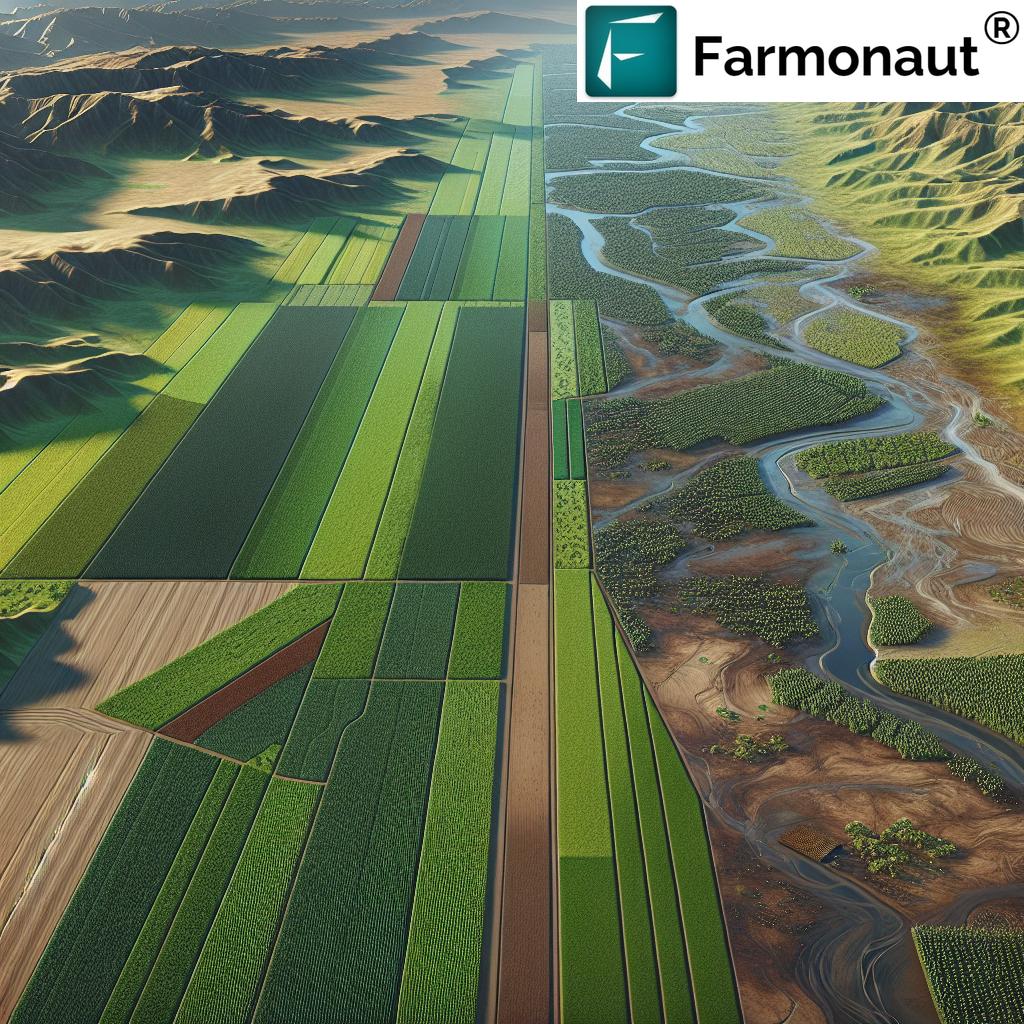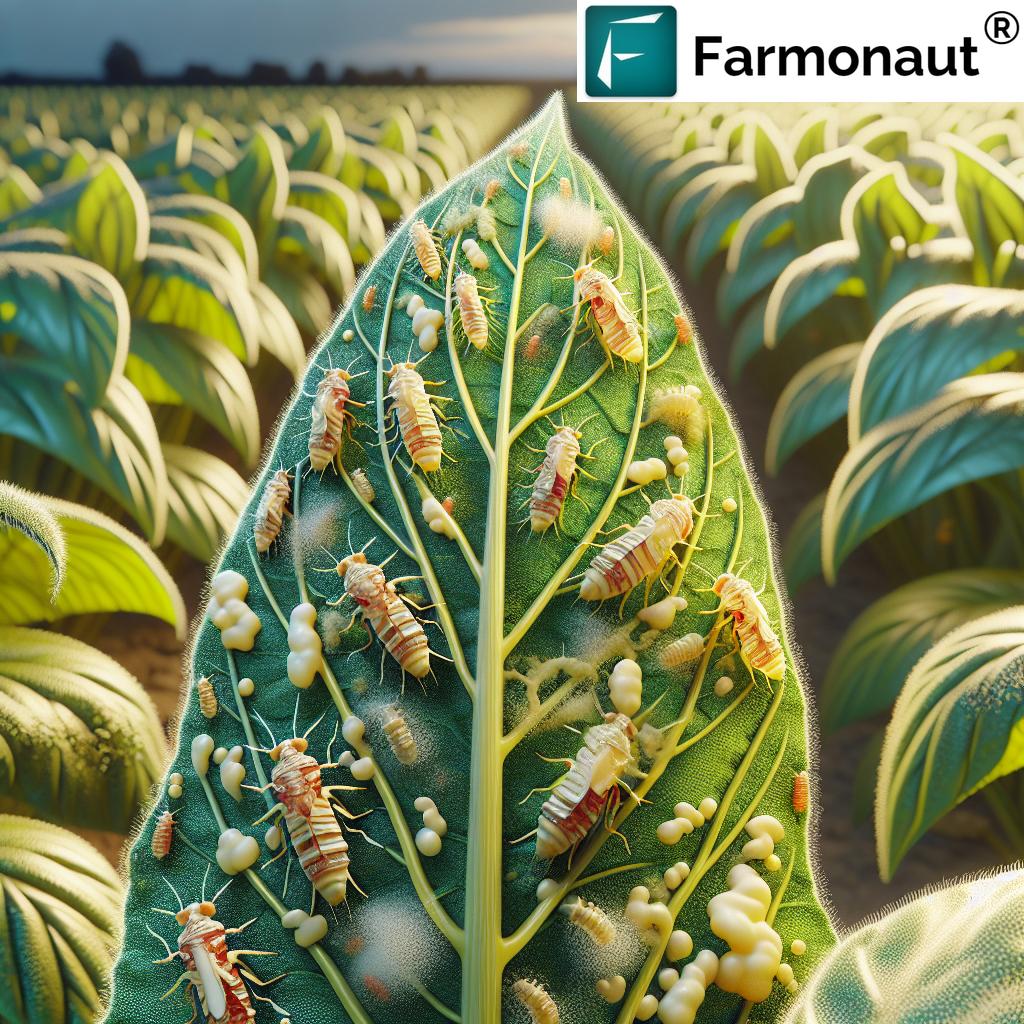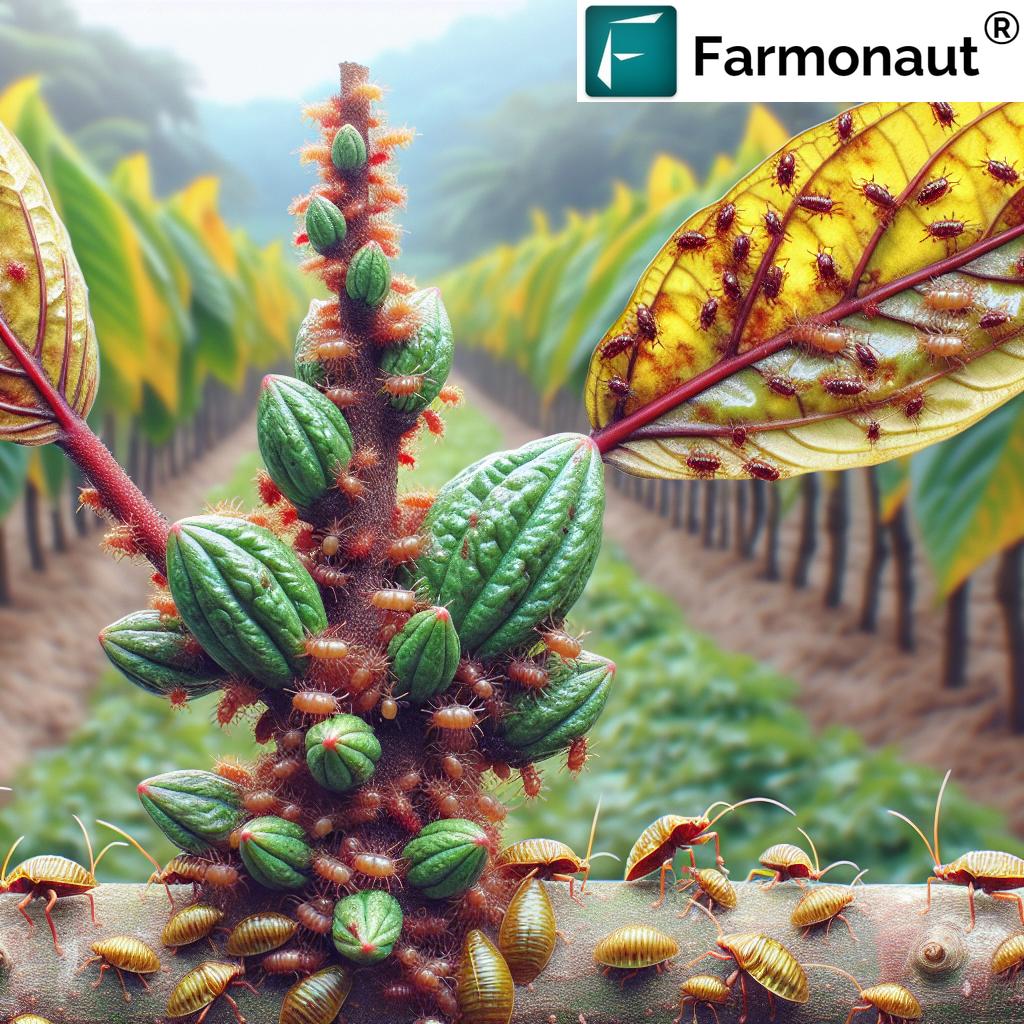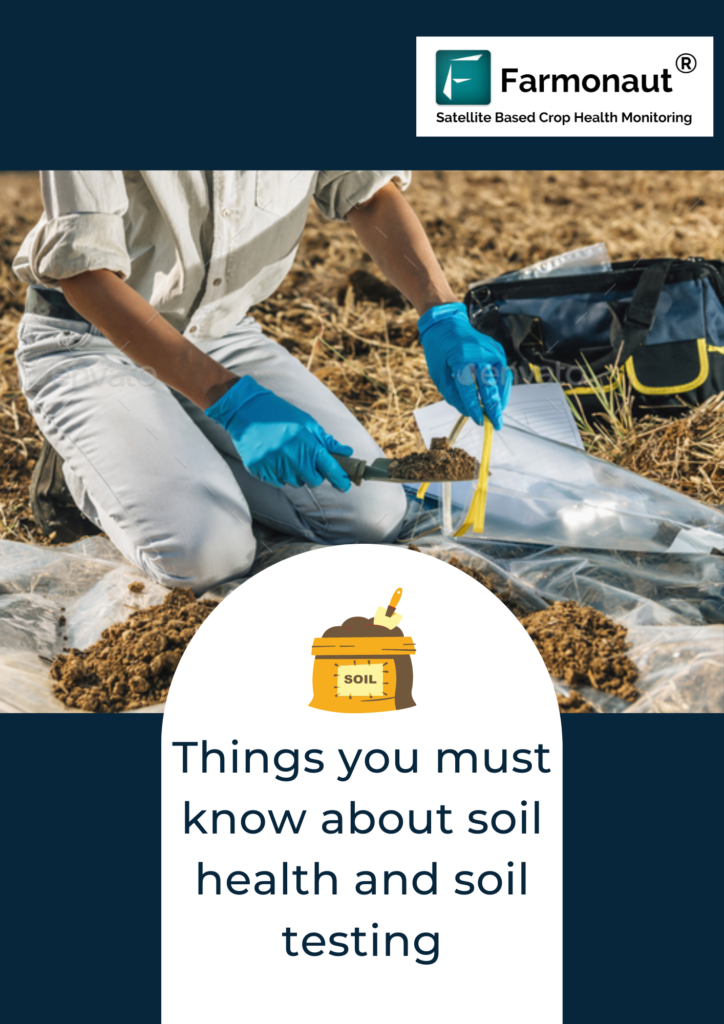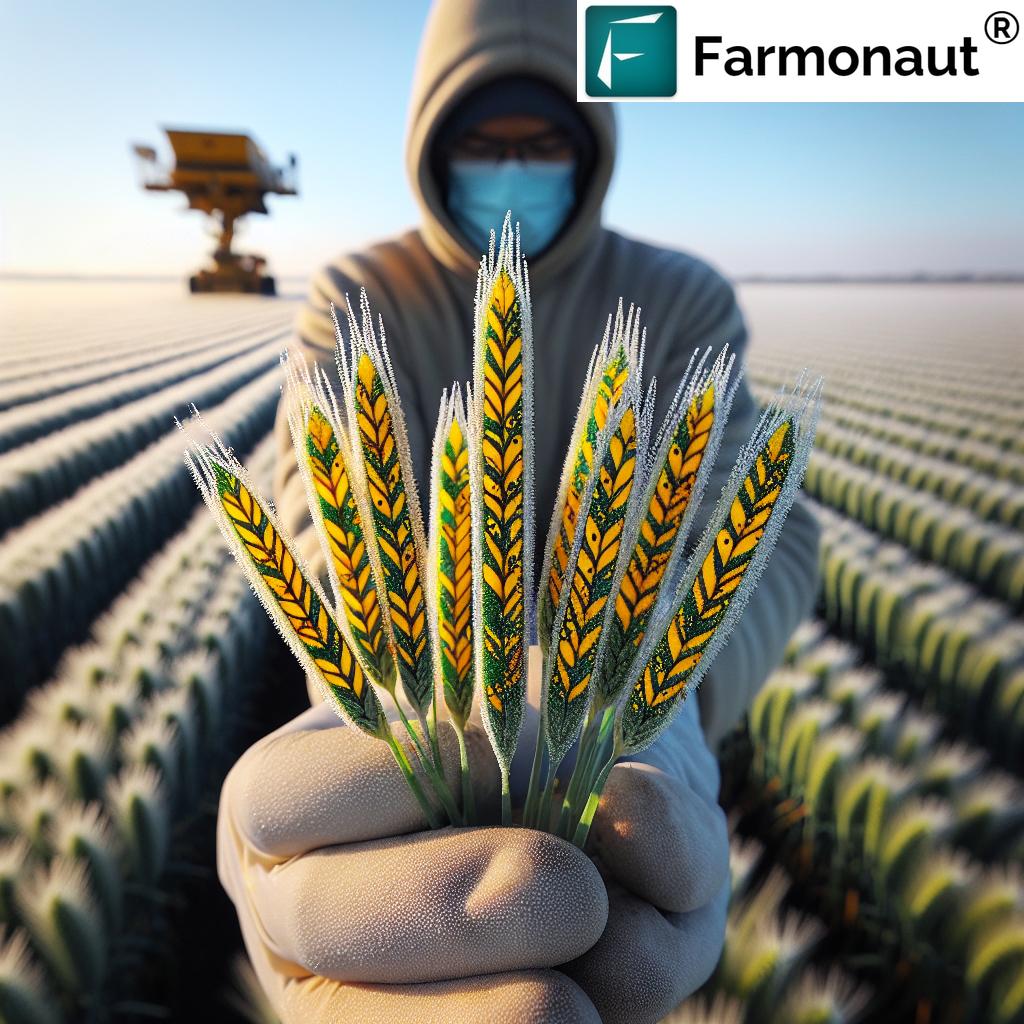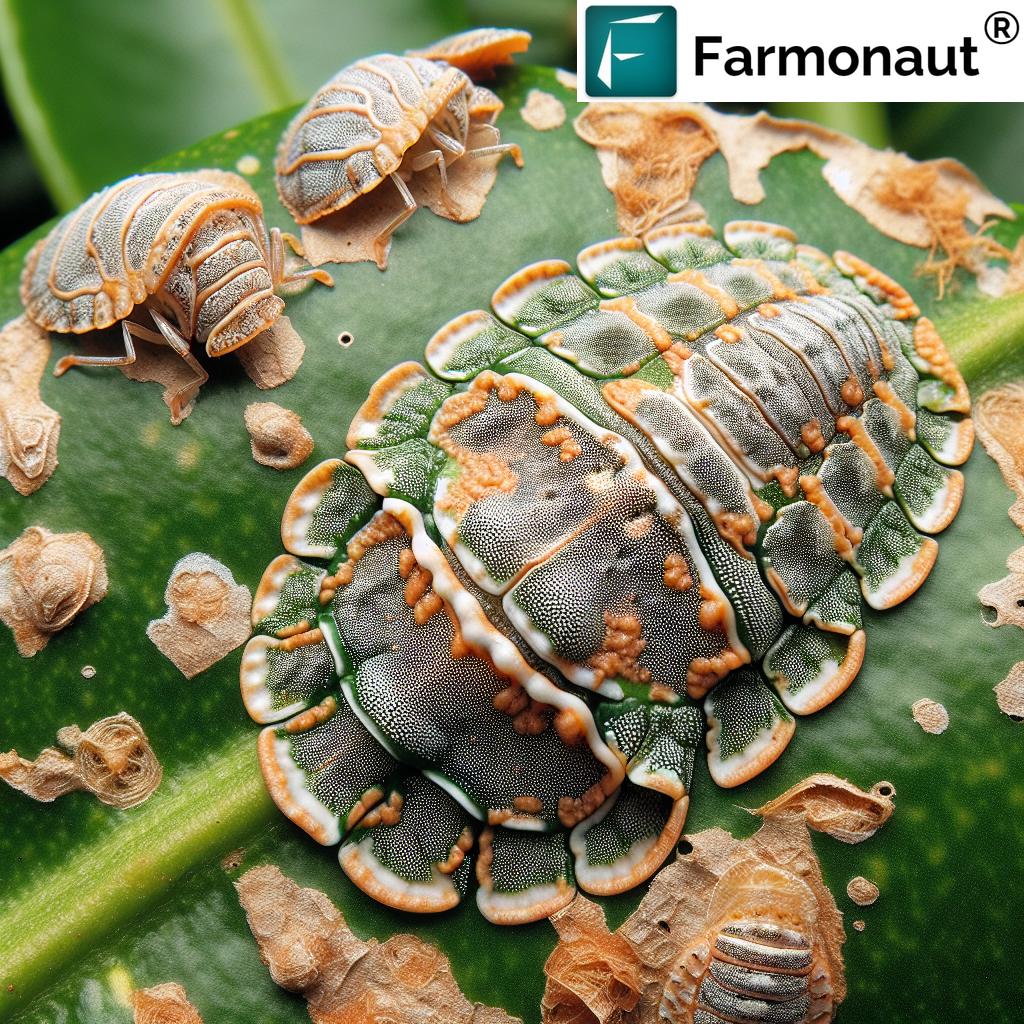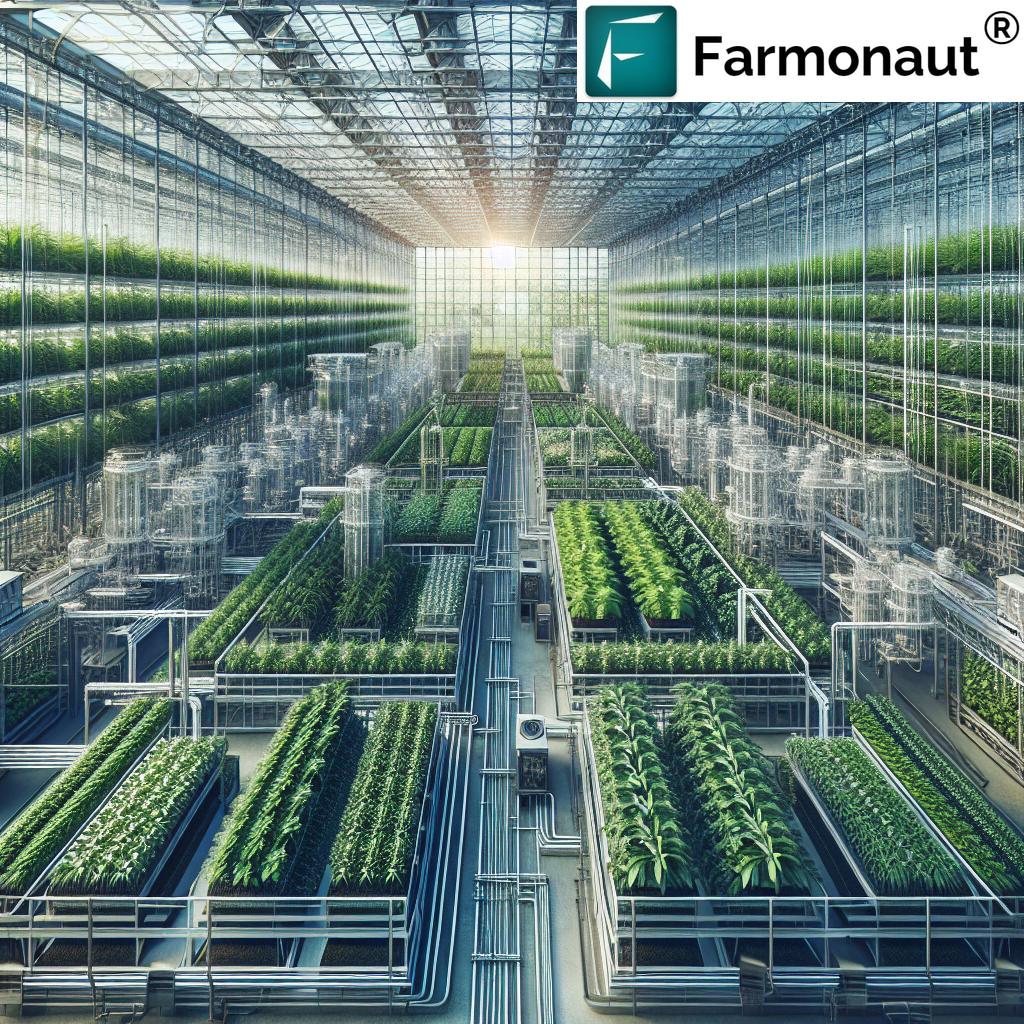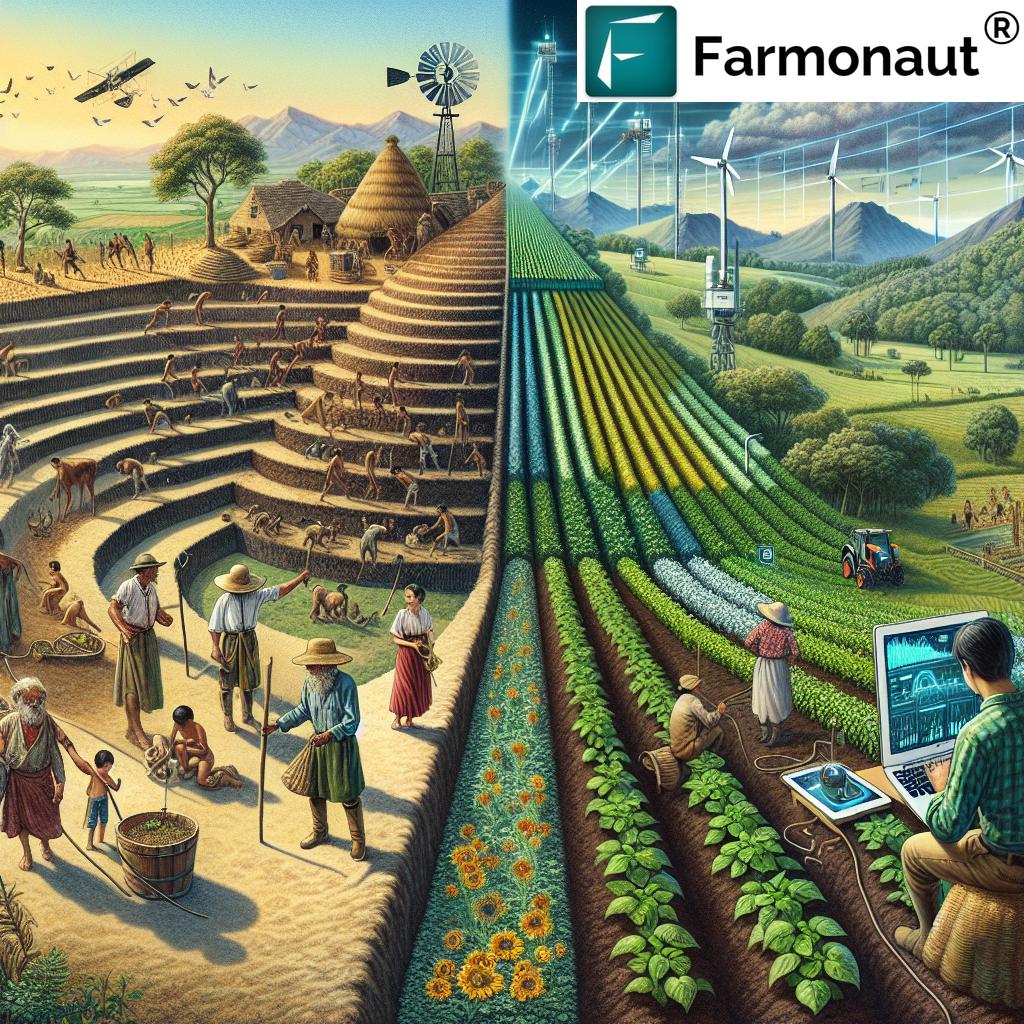What Class of Land Is Easiest to Farm? Top Insights
What class of land is easiest to farm? It’s a critical question for anyone engaged in agriculture—whether planning a new farm, optimizing existing fields, or investing in rural land. As we explore the land capability classification system, we’ll uncover the answers, blending scientific land classification with practical advice for sustainable land management and long-term farm productivity. At Farmonaut, we believe that understanding the classes, limitations, soil properties, and other factors influencing land suitability for farming is fundamental to making informed, sustainable choices.
Introduction: Land Capability Classification & Sustainable Agriculture
In agriculture, the suitability of land for farming is rarely random. It’s typically assessed using the land capability classification system—a structured approach that evaluates various factors influencing the productive potential of land. This classification provides essential guidance for farmers, land planners, and policymakers seeking to maximize agricultural productivity while maintaining environmental health.
Our goal is to demystify this system and deliver actionable insights. We’ll investigate soil types for agriculture, the significance of drainage and topography, and how sustainable management and emerging technologies like those of Farmonaut can elevate farmland productivity.
Land Capability Classification System: An Overview
The land capability classification system is an internationally recognized method for categorizing land into eight distinct classes (I–VIII), each reflecting the ability of that land to support various uses, particularly crop cultivation. In practice, Class I lands are prime for intensive agriculture, while Class VIII is largely unsuitable for any kind of cultivation due to severe limitations.
Main Factors Assessed:
- Soil properties such as fertility, pH, and depth
- Topography—the land’s slope, which affects the risk of erosion and water movement
- Drainage systems—critical for preventing waterlogging and enabling healthy crop growth
- Climate conditions, such as rainfall, temperature, and growing season length
- The presence of physical challenges like stones, salinity, or shallow bedrock
By evaluating these factors, the system offers a foundation for informed decisions regarding land use, sustainability, and agricultural productivity.
Detailed Breakdown: Land Capability Classes I–VIII
To guide farmers and land planners in making informed decisions, let’s explore each class in the land capability classification system.
Class I: The Prime Farmland – Easiest to Farm
Class I land is considered the easiest and most suitable for intensive farming. It’s characterized by:
- Deep, well-drained, fertile soils
- Nearly level topography (minimal slopes)
- High organic matter and balanced texture (often loamy—a mix of sand, silt, and clay)
- Minimal limitations—meaning farming here generally does not require special conservation measures
This class of land supports a wide range of crop cultivation (e.g., cereals, vegetables, pulses) and allows for efficient, intensive use with optimal productivity. It’s the best land for crop cultivation and is the foundation for sustainable high-yield farming.
Class II: Good Farmland with Slight Limitations
Class II land offers similarly high suitability for cultivation but may have:
- Slight limitations like moderate slopes, minor drainage or texture issues
- Potential need for specific management practices such as contour plowing or light drainage system installation
With proper management, Class II lands remain highly productive and can support diverse types of crops.
Class III: Fairly Good Farmland – More Pronounced Limitations
Class III land is characterized by:
- Pronounced limitations—steeper slopes, less ideal soil textures, and moderate drainage problems
- Limitations that may restrict crop choice and require intensified conservation management (e.g., terracing, crop rotation to prevent erosion)
While still a viable option for farming, a higher degree of care is required to maintain soil health and sustainable productivity.
Class IV: Marginal Farmland – Severe Limitations
Class IV land deals with:
- Severe limitations like steep slopes, shallow soils, or significant drainage issues
- Typically more suited for less intensive uses—such as pasture or hayfields—rather than row crops
- Substantial need for conservation measures to prevent degradation and sustain any kind of usage
Farming here can be marginal in terms of profitability.
Classes V–VIII: Unsuitable for Cultivation; Alternative Uses Suggested
- Class V: Lands are generally unsuitable for cultivation due to permanent limitations (e.g., frequent flooding, rockiness), but may be suitable for pasture or woodland.
-
Classes VI–VIII: These categories represent lands with severe or extreme limitations.
- Class VI may support light grazing or forestry.
- Class VII is best left in its natural state or used for wildlife conservation.
- Class VIII is typically used only for recreation or environmental protection—agriculture is not feasible and attempts can lead to significant environmental degradation.
Key Factors Influencing Farmland Productivity
Understanding the factors influencing farmland productivity is vital for choosing the best land for crop cultivation and adopting effective sustainable land management practices. Here are the primary influences:
- Soil Quality & Type
- Fertility: Soils rich in nutrients and organic matter are typically more productive.
- Texture: Loamy soils—those with a balanced mix of sand, silt, and clay—offer ideal water retention and aeration for optimal root development and growth.
- pH and Salinity: The right pH and absence of excess salts prevent toxicity and support a wide range of crops.
- Topography & Slope
- Nearly level land enables easy mechanization, uniform water application, and reduces the risk of erosion.
- Steeper slopes require more careful management (terracing, contour plowing) to counteract soil degradation.
- Drainage
- Well-drained soils are essential for healthy crops; poor soil drainage can inhibit root function, facilitate disease, and reduce yields.
- Site-specific solutions like installing drains or adopting raised beds can mitigate these challenges.
- Climate Conditions
- Crop suitability is often dictated by rainfall patterns, temperature range, and length of the frost-free season.
- Temperature extremes or unpredictably harsh weather can limit growth, increase input needs, and reduce profitability.
Soil drainage and crop growth, combined with the classification of agricultural land, give us a framework for maximizing yields while ensuring sustainable stewardship.
Understanding Soil Types for Agriculture: What’s Most Suitable?
Differentiating soil types for agriculture is a key aspect of land assessment. Various soils come with distinct properties, challenges, and suitability for farming:
- Loamy Soils: A balanced mix—these are most often classified as Class I. High fertility, superior aeration, excellent drainage, and optimal nutrient retention. These soils are ideal for a wide range of crops.
- Sandy Soils: Drain extremely well, but may lack nutrients and require irrigation and organic matter amendments. Typically classified as Class II–III, depending on other factors.
- Clay Soils: Hold water and nutrients well but may be poorly drained and compact. Can be productive if managed properly, typically falling into Classes II–III with management.
- Silty Soils: Often fertile but prone to compaction and erosion, especially where slopes are present.
- Peaty, Mucky, or Saline Soils: Typically have severe limitations; usually fall into Classes IV–VIII and need special management (if used for farming at all).
Insight: Using satellite-based monitoring can help us assess soil moisture, organic content, and visible crop health—tools available on the Farmonaut platform—allowing efficient, data-driven management even on less-than-ideal soils.
Topography Impact on Farming: Slope, Drainage, and Management
Topography—the shape and slope of the land—is a foundational consideration for land suitability for farming. Here’s why:
- Gentle or nearly level slopes favor Class I & II land: easier mechanization, uniform irrigation, and higher efficiency.
- Steeper slopes increase erosion risk: runoff can wash away soil organic matter and nutrients, reducing fertility over time.
- Effective drainage is often more complicated on sloping or undulating land.
-
Best practices to mitigate these risks include:
- Implementing contour plowing – aligning cultivation with natural terrain lines to slow runoff and minimize erosion.
- Terracing – engineering step-like fields on steep slopes to reduce erosion and create flat planting areas.
- Establishing drainage systems where rain or irrigation water might otherwise stagnate.
Understanding the topography impact on farming isn’t just about production; it also helps us apply sustainable land management practices that maintain soil health and prevent environmental degradation.
Land Capability Classes: Suitability for Farming and Sustainability
| Land Class | Main Soil Characteristics | Estimated Ease of Farming | Suitable Crops (Examples) | Sustainable Management Practices |
|---|---|---|---|---|
| I (Prime) | Deep, well-drained, loamy, high fertility, level terrain | High | Wheat, maize, vegetables, pulses, most row crops | Minimal—standard crop rotation, balanced fertilization, regular monitoring |
| II (Good) | Moderate depth, gentle slopes, minor drainage issues, medium texture | High | Soybean, barley, feed grains, potatoes, root crops | Contour plowing, periodic drainage maintenance, basic erosion control |
| III (Fairly Good) | Shallow/moderate soils, steeper slopes, variable texture, modest fertility | Medium | Forage, pulses, oats (less water-intensive crops) | Terracing, aggressive crop rotation, intercropping, increased organic amendments |
| IV (Marginal) | Shallow, stony, poor drainage, significant slope | Low | Hay, pasture grasses, native adapted crops | Heavy erosion control, grass strips, extensive drainage, managed grazing |
| V (Unsuitable: Non-Arable) | Poor soil, excessive wetness, flooding, rocky | Very Low | Pasture (seasonal), some specialty forest crops | Leave undisturbed, managed grazing, conservation or forestry plantings |
| VI (Unsuitable: Severe Limitations) | Very shallow, rocky, steep, erosion-prone | None (unsuitable for crops) | Forestry, wildlife, native grassland | Reforestation, conservation easements, habitat restoration |
| VII (Extreme Limitations) | Extremely steep, thin soils, exposed bedrock | None | Natural forest, wildlife refuge | Long-term conservation, protection measures |
| VIII (Unusable) | Mountain tops, deserts, wetlands, very poor | None | None (conservation only) | Preservation, environmental protection only |
Use this table to compare land classes instantly and guide your classification of agricultural land and sustainable land use strategies.
Sustainable Land Management Practices for Each Land Class
Sustainable land management practices are tailored to each land class and should address the limitation challenges specific to that class:
- Class I–II: Rotate crops, minimize tillage, use cover crops, and monitor soil health through precision tools for optimal productivity.
- Class III–IV: Aggressively prevent erosion with contour plowing, grassed waterways, and buffer zones. Integrate organic amendments or add drainage systems if required.
- Class V–VIII: Use for pasture, agroforestry, or leave under natural cover. Focus on environmental conservation and preventing degradation.
- Precision Agriculture Tools: Satellite monitoring platforms like Farmonaut offer real-time insights for adaptive management on all land types. Leverage our API and API Developer Docs for custom integrations, sustainability reporting, and large-scale monitoring.
Additionally, our blockchain-based traceability solutions ensure supply chain transparency for sustainable sourcing and authentic agricultural product origin.
How Farmonaut Empowers Sustainable Agriculture
At Farmonaut, we make precision agriculture accessible to all, whatever your land class, by integrating innovative technology and real-time data insights into daily farming decisions. Here’s how our services bridge data and sustainability:
- Satellite-based Crop Health Monitoring: Our multispectral analysis provides insights on vegetation vigor (like NDVI), moisture patterns, and emerging problems, tailored for all land classes. This supports proactive nutrient management, irrigation, and pest control.
- AI & Jeevn Advisory Systems: Personalized recommendations—right crop for the right class, warnings on drainage issues, and seasonal planning improve both intensive and marginal farmland outcomes.
- Blockchain-based Traceability: Authenticates every step from field to consumer, boosting trust and transparency in sustainable products.
- Resource & Fleet Management: Optimize input use, minimize waste, and reduce emissions across large and small holdings.
- Carbon Footprinting: Track and actively manage your environmental impact, meeting regulatory and market demands for sustainability and stewardship.
Explore our range of affordable, scalable solutions—via web, Android, and iOS—for smarter land, crop, and resource management. For those managing thousands of hectares, our large-scale farm management tools provide centralized dashboards and historic analysis to optimize both profitability and environmental outcomes.
Frequently Asked Questions (FAQ)
What is the easiest class of land to farm?
Class I land is the easiest to farm. It’s characterized by deep, fertile, well-drained soils with nearly level topography and minimal limitations—making it ideal for a wide range of crops and intensive cultivation.
What factors affect land suitability for farming?
Soil type and fertility, topography (slope), drainage capacity, climate conditions, and physical limitations (like rockiness or shallow depth) all influence a land’s suitability for farming.
How does the land capability classification system help farmers?
The land capability classification system guides land use decisions by identifying classes of land based on their ability to support agriculture. It helps farmers understand soil and terrain limitations, choose suitable crops, and plan management practices for sustainable productivity.
Can less suitable or marginal land be used for farming?
Yes, but marginal lands (Classes III & IV) often demand specialized sustainable land management practices—such as erosion control, proper drainage, and restricted crop selection—to be viable for farming. Classes V–VIII are generally unsuitable, except for pasture, forestry, or conservation.
How does climate influence land use classification?
Climate sets the boundaries for what crops will thrive, impacts soil water balance, and can either increase or decrease the limitations present in each land class (e.g., increasing erosion risk or drought stress).
Conclusion: Making Informed Land Use Decisions for Sustainable Productivity
The land capability classification system remains an invaluable tool for farmers and agricultural planners worldwide. By recognizing that Class I land is the easiest and most optimal to farm, we set a benchmark for suitability and productivity. However, our experience and the science both show that with careful sustainable management—including precision ag technologies like those from Farmonaut—even less-than-ideal land can contribute meaningfully to food security and environmental stewardship.
By understanding the limitations, capabilities, and unique characteristics of each land class, we empower ourselves to select the right crops, apply the right management techniques, and protect the vital resource that is our soil. Let’s commit to informed, sustainable, and innovative land use decisions that secure both our agricultural productivity and our shared environment for generations to come.
Ready to make the most of your farmland? Try Farmonaut’s platform for affordable, advanced, and sustainable farm management today.



